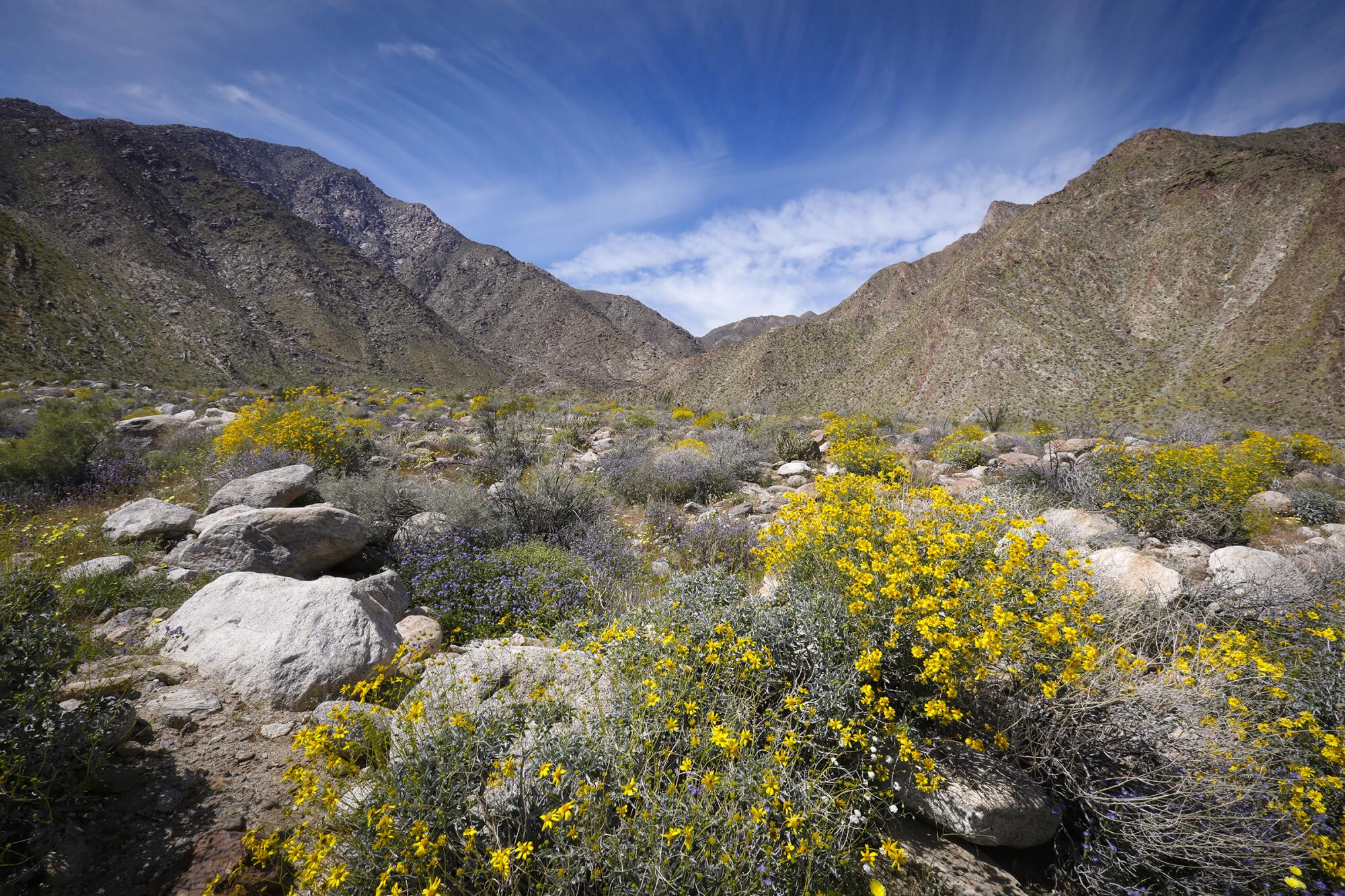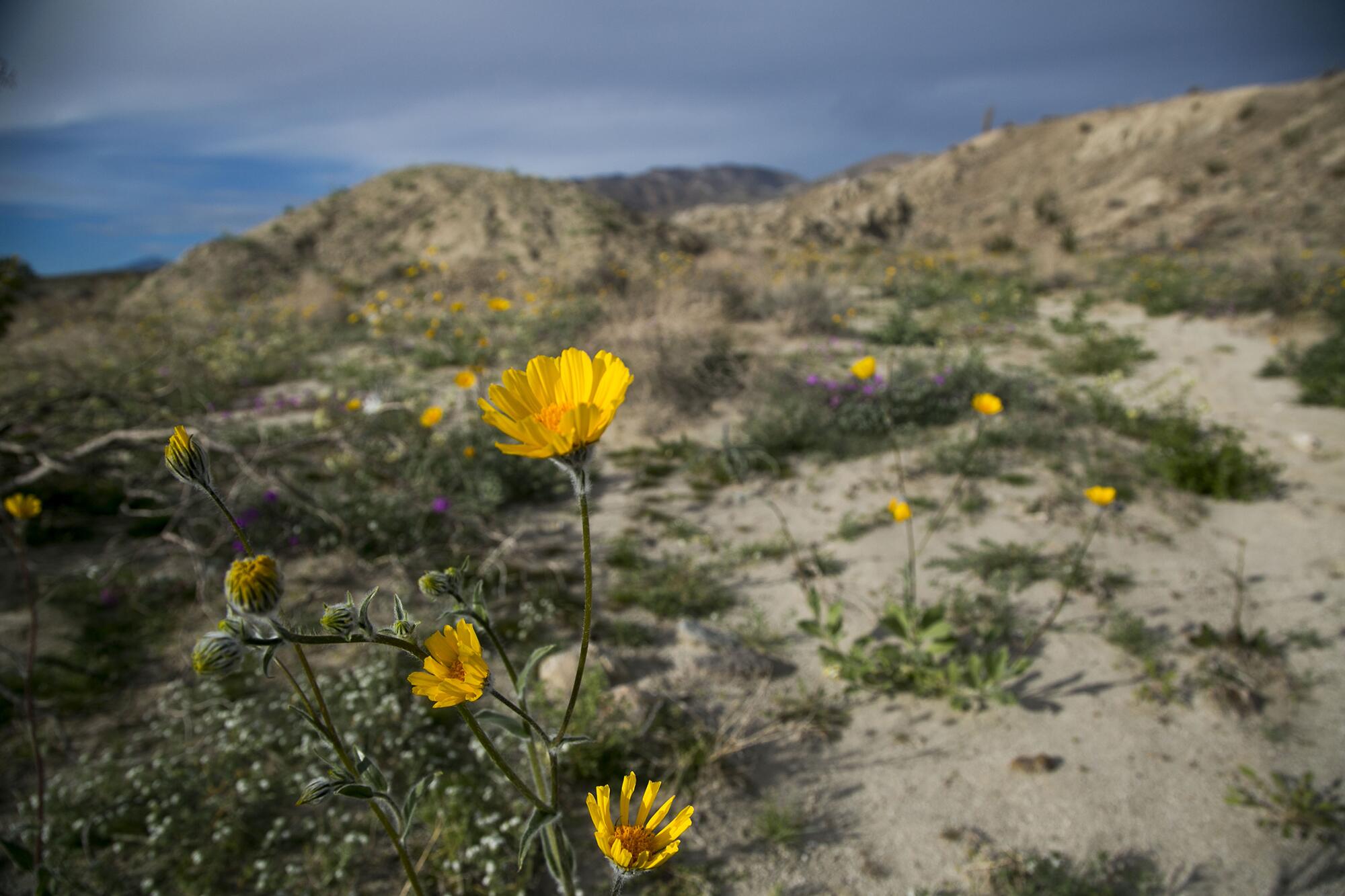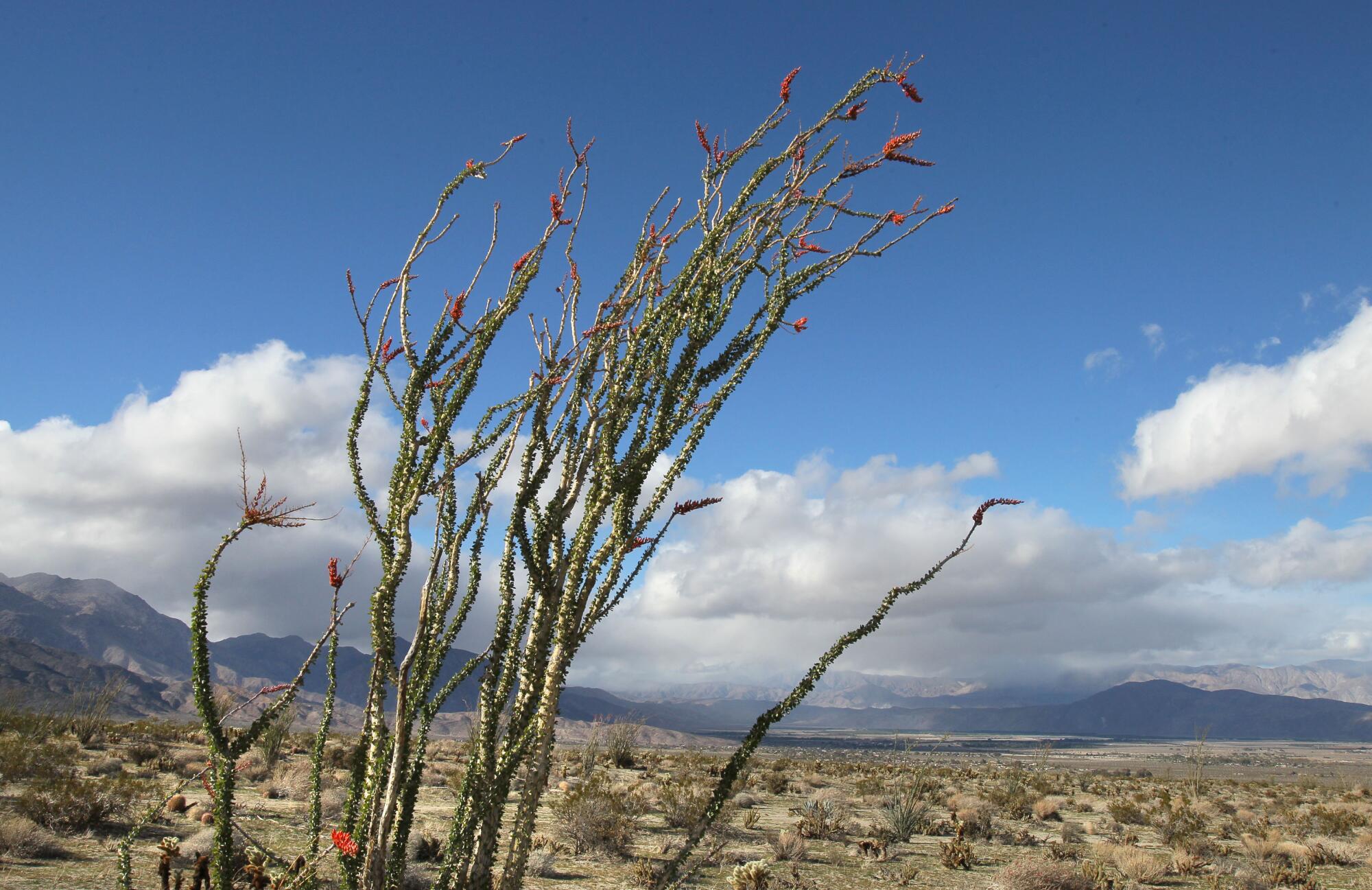
- Share via
Thanks to a dry winter, visitors to the Anza-Borrego Desert State Park this spring won’t get to enjoy a wildflower “super bloom,” but a rainstorm last week has raised hopes for a late-season burst of color in early April.
Borrego Springs officials said last week they’re enjoying a moderately busy wildflower visitor season, despite COVID-19 rules that have continued to restrict restaurants to outdoor dining, canceled on-site tourist events and kept the doors locked at the Anza-Borrego Desert State Park visitors center.
But that’s an improvement from last year, when the pandemic bloomed just a couple weeks into the peak season of March and April. Stay-at-home orders in spring 2020 temporarily closed the state park and all restaurants, hotels, nonessential businesses and even community parks.
Betsy Knaak, executive director of the Anza-Borrego Desert Natural History Assn., has lived in the Borrego area for 43 years. She’s become pretty good at knowing when it’s going to be a banner year for the famous rainbow-like carpets of blooms that include sand verbena, desert bluebells, chuparosa, brittlebush, Spanish needle, desert apricot, desert lavender and Baja fairy dust.

Those rain-fueled super blooms occurred in 2017 and 2019, and they each drew an estimated 250,000 to 500,000 visitors during peak season. The 2017 bloom, nicknamed “flowermageddon” by some, was such a legendary tourist magnet that weekend traffic backed up 20 miles on Montezuma Valley Road (County Highway S-22), the road that leads into the 630,000-acre state park in east San Diego County.
Knaak said visitors arriving this month won’t see fields of color, but they will spot pockets of flowers and annual blooming shrubs, especially if they venture to the shadier areas that retain some moisture, such as Box Canyon, Rainbow Canyon and Hornblend Canyon.
“We don’t want people to get their hopes up too high,” she said. “Right now people are reporting patches here and there, especially in the area we call south of Scissors Crossing. They’re seeing some nice blooms. Not big fields or anything, but people who are into botany are finding them.”

In a phone interview last week, Knaak said the forecast for the rest of the peak season wasn’t looking great. Then she called back 20 minutes later with joy and excitement in her voice.
“Do you hear that?” she asked, holding the phone to the window at the history association’s office, where a roar of rain was coming down. “It’s pouring. This is a game-changer.”
According to the National Weather Service, a little under a quarter-inch of rain fell in the Borrego desert Wednesday afternoon. That may not sound like much, but the Borrego region averages only 5.3 inches a year, and more rain is in the forecast this week. Knaak said it takes from three to six weeks for flowers to emerge after a good rainfall like last week’s. The flowers now blooming in the park were germinated in a late January storm, so Knaak said the soonest these new flowers will arrive is late March or early April.

Visitors arriving at the desert park this spring will find most attractions open. The state park is open for a $10 day-use fee, dispersed camping is allowed and hiking trails are open, though state officials are encouraging single-household groups to ensure social distancing. The park is not offering special events, and its visitors center is closed, but its phone line is open at (760) 767-4205.
For the second year in a row, the history association has been forced to cancel its biggest fundraiser of the year, the spring garden tour, as well as its spring birding festival. But on the positive side, it has transitioned many of its ticketed walking tours into webinars that have received immense visitor traffic from all over the U.S., as well as Canada, Mexico and England. Details on the webinars and other virtual programs can be found on the association’s website at abdnha.org or its wildflower page at borregoblooms.org.
The association also strongly encourages visitors to call ahead for updates on its wildflower hotline, where a frequently updated recorded message includes where blooms can be found and what to expect. That number is (760) 767-4684. Or visit parks.ca.gov.
Knaak said the good thing about the lack of a super bloom this year is that traffic in the park and in Borrego Springs, a 3,400-resident town just east of the park entrance, is far more manageable than in recent years.
“It isn’t crowded like what people are accustomed to at this time of year,” she said. “It’s still beautiful, and it’s lovely hiking weather. We’d love for people to come out, we just don’t want to mislead them about the flowers and have them be disappointed.”
More to Read
Sign up for Essential California
The most important California stories and recommendations in your inbox every morning.
You may occasionally receive promotional content from the Los Angeles Times.










